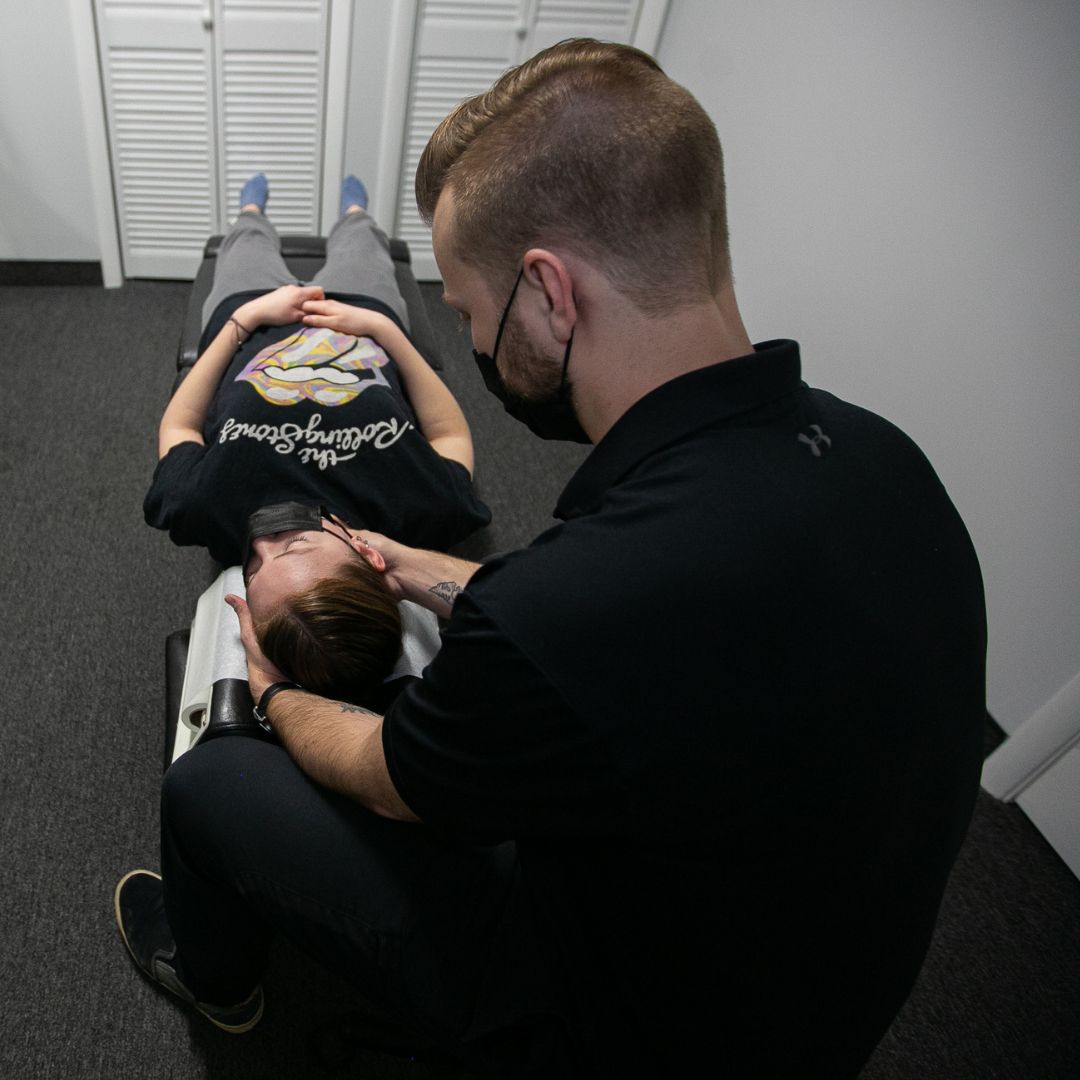Chiropractic myths perpetuated by social media can cause confusion about chiropractic care will look like. I’ve had several patients nervous about seeking treatment because of what they’ve seen on social media. They are seeking conservative care, but social media is full of cracking, popping, and painful treatments.
I wanted to use this platform to dispel some of the common chiropractic myths I’ve seen online.
Chiropractic Care is Painful
You may have seen social media videos of someone wincing in pain because there’s an elbow in their neck or a tool pressed into their back. This might give the impression that care needs to be painful to be productive.
Most patients with an active complaint are sensitive to pain so it’s important to modulate my treatment to provide benefit without exacerbating the pain. Although deep tissue massage and mobilization of an inflamed or aggravated joint is uncomfortable, as healthcare providers, I’m here to help patients, not hurt them.
So is care tender at times? Yes. Should it ever cross the threshold to outright pain and aggravation? No! If your provider isn’t adjusting treatment to your tolerance level or ignoring requests to lighten up, perhaps it’s time to consider terminating your relationship with them.
Chiropractic Adjustments Are Just Cracking Joints
If you’ve ever seen a TikTok video showing someone body slamming a bag of potato chips or YouTube ASMR video compilations of crazy neck cracking, you probably think that chiropractic care is just making the joints pop. However, that’s not entirely true.
Tribonucleation is a science term for “a mechanism that creates small gas bubbles by the action of making and breaking contact between solid surfaces immersed in a liquid containing dissolved gas.” In laymen’s terms, it’s the act of increasing joint space in a way that creates bubbles in the joint fluid, resulting in a popping sound. But is the popping sound important?
If a joint is restricted, the space between the bones will be compressed. Ergo, if that joint space is decompressed, it’s likely that tribonucleation will occur. The goal of an adjustment is to restore joint motion. Cracking and popping isn’t guaranteed or a metric for success. If you feel better after the adjustment then it was an effective, cracking or no cracking.
Chiropractic Appointments Are All About The Adjustment
A vast majority of chiropractic content on social media showcases the adjustment and not much else. This is especially true on TikTok and YouTube. While there are some providers that approach treatment this way, there’s a lot more to it.
Social media often leaves out the doctoring portion of the appointment. These steps don’t have quite the shock value necessary to engage viewers so they’re often omitted. Unfortunately, this is the most important party of any health care appointment.
During the first appointment, I review the patient’s medical history, details of their injury, orthopedic and neurological exams, and any other information pertinent to diagnosis and treatment. Often times patients don’t realize how in-depth the first appointment will be, but it should look identical to an appointment with a medical doctor.
In Conclusion
Social media content is not necessarily an accurate reflection of in-office care. Accounts often show content that will boost engagement and increase watch time to improve performance in the algorithm. Doctors appointments aren’t sexy and attention grabbing and they’re certainly more in depth than what can be shown in a 3-minute clip.
Social media can be a great tool for a healthcare provider by providing a platform for patient education and encouraging people to seek treatment. It can even showcase a providers treatment style and approach to healthcare so you can make an informed decision. However, it barely scratches the surface of chiropractic care and the 9+ years of education behind it.
Chiropractic myths are a dense topic that I plan to revisit in future blog posts. Stay tuned!





